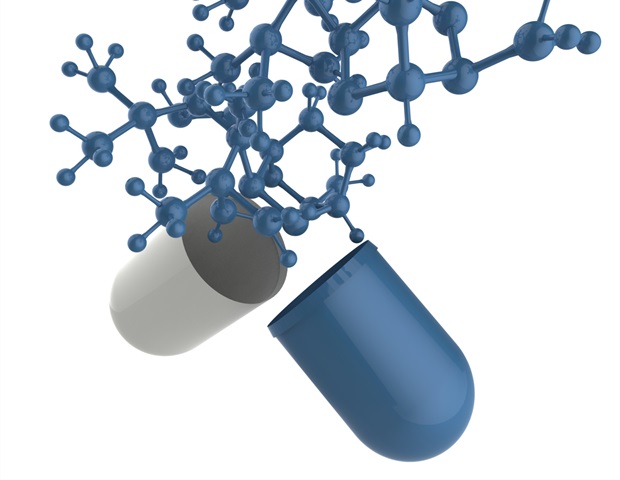
Gentle on – micro organism useless. Disinfecting surfaces could possibly be so simple as that. To show this concept right into a weapon towards antibiotic-resistant germs, Empa researchers are creating a coating whose germicidal impact will be activated by infrared mild. The plastic coating can be skin-friendly and environmentally pleasant. A primary utility is at the moment being carried out for dentistry.
Antibiotic-resistant micro organism and rising viruses are a quickly rising menace to the worldwide healthcare system. Round 5 million deaths annually are linked to antibiotic-resistant germs, and greater than 20 million folks died in the course of the COVID-19 virus pandemic. Empa researchers are due to this fact engaged on new, urgently wanted methods to fight such pathogens. One of many objectives is to stop the unfold of resistant pathogens and novel viruses with sensible supplies and applied sciences.
Surfaces that come into fixed contact with infectious brokers, akin to door handles in hospitals or gear and infrastructure in working theaters, are a very appropriate space of utility for such supplies. An interdisciplinary workforce from three Empa laboratories, along with the Czech Palacký College in Olomouc, has now developed an environmentally pleasant and biocompatible metal-free floor coating that reliably kills germs. The spotlight: The impact will be reactivated many times by exposing it to mild.
Biocompatible and efficient
The brand new materials is designed to kill microorganisms regionally and rapidly.”
Giacomo Reina, Empa’s Nanomaterials in Well being Laboratory in St. Gallen
A fundamental matrix of polyvinyl alcohol, a biocompatible plastic that can be used within the meals business, was used for this goal. Embedded on this matrix is specifically synthesized graphenic acid, which is ideally suited as an antimicrobial coating attributable to its chemical properties. Its full potential will be exploited through the use of near-infrared mild. As quickly because the composite materials is irradiated, it unfolds its twin technique: Firstly, it absorbs the power of the infrared mild and converts it into germicidal warmth. It additionally stimulates the formation of oxygen radicals, which trigger further harm to the pathogens.
One other benefit right here is that this technique is totally completely different from the mode of motion of typical antibiotics. The fabric thus gives steady safety towards a broad spectrum of microorganisms with out contributing to the event of resistance. “Our laboratory experiments have clearly confirmed the effectiveness of the antimicrobial materials towards numerous micro organism and viruses,” says the Empa researcher.
Utility for dentistry
An preliminary utility for the antimicrobial coating is at the moment being developed for dentistry. To this finish, Empa researchers are working along with the Middle for Dental Medication on the College of Zurich on a dental splint that kills microorganisms within the oral cavity.
The microbial flora within the mouth is a very disagreeable opponent within the combat towards infectious brokers: Advanced communities of micro organism cavort in inaccessible niches, embedded in a self-produced mucous matrix. Antibiotics and disinfectants barely penetrate these resistant biofilms. This enables the germs to break tooth unhindered and even result in in depth infections within the physique. The interdisciplinary workforce led by Giacomo Reina is due to this fact engaged on a plastic splint into which nanomaterials akin to graphenic acid will be stably built-in. As near-infrared mild can penetrate the tissue a number of centimeters deep, the splint will be positioned within the oral cavity and activated from the surface by a light-weight supply, again and again.
The undertaking will be began because of beneficiant donations from the Eduard Aeberhardt Basis and one other basis. Clinic Director Ronald Jung from the Middle for Dental Medication on the College of Zurich appreciates this interdisciplinary strategy to supplies science and medical analysis. “Such new and revolutionary options will provide nice added worth for sufferers,” says Jung.
Supply:
Journal reference:
Reina, G., et al. (2025). Gentle Irradiation of N‐Doped Graphene Acid: Steel‐Free Technique Towards Antibacterial and Antiviral Coatings With Twin Modes of Motion. EcoMat. doi.org/10.1002/eom2.70009